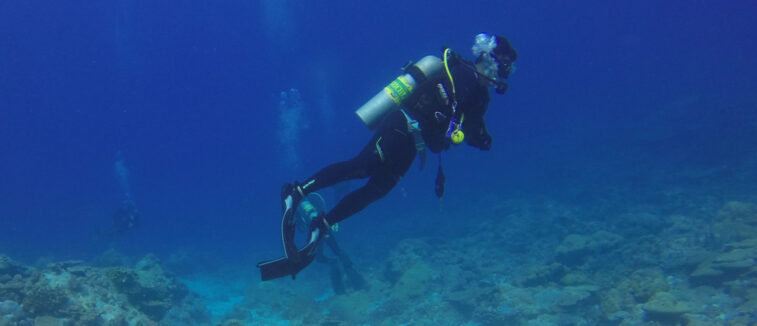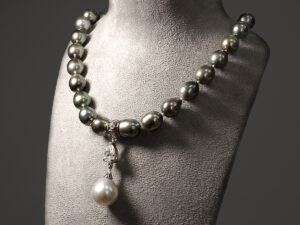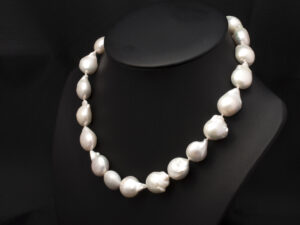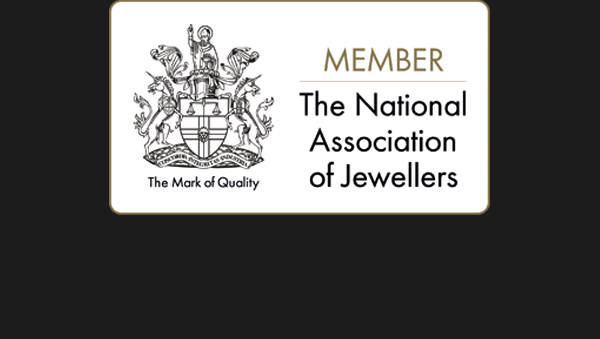KELVINBRIDGE · GLASGOW
|TEL 0141 334 0557
BOOK NOW FOR IN-HOUSE ONE TO ONE OR VIRTUAL/REMOTE CONSULTATIONS
The world is your oyster… it’s up to you to find the pearls
- Date: 27th June 2024
- Author: Blair & Sheridan
- Categories:
Exuding a unique charm and elegance; pearls have been heralded as a must-have luxury for centuries. Considered the ultimate status symbol by ancient Romans, pearls association with royalty dates back to 420BC due to the discovery of a fragment of pearl jewellery in the sarcophagus of a Persian Princess. Laterally synonymous with the roaring twenties, pearl jewellery remains a timeless and classic accessory. Read on to find out what makes this exquisite gem so highly sought after and how bespoke pearl jewellery comes about…
Nature vs Nurture
Pearls are one of the earliest gems to be used in body adornments. As they do not require to be cut or shaped (like diamonds or other gemstones) pearls are easily turned into jewellery. Natural pearls are extremely rare with only a small percentage of those achieving the optimum size, shape and quality required for the jewellery industy. Water-dwelling creatures known as molluscs are the sole source of pearls – most importantly saltwater oysters and freshwater mussels. The main types of pearls used in jewellery design are either ‘natural’ or ‘cultured’ both of which can be freshwater or saltwater. Simply put; cultured pearls are the result of human intervention by way of pearl farming. China is the biggest producer of cultured pearls closely followed by Japan, Australia and Indonesia.
Like the name suggests, natural pearls occur on their own in the mantle tissue of marine oysters and freshwater mussels. Only about 1 in 10,000 wild oysters will yield a pearl so are very rare. Pearls are formed when the molluscs release chemicals in response to an irritant such as a parasite entering their shell or damage occurs to their body. These chemicals – aragonite and conchiolin – build up layers of nacre which go on to create round pearls. Some pearls can develop in a few months with larger gems taking around 4 years to reach maturity.
Where in the world do pearls come from?
At one time freshwater pearl mussels were prevalent in Scottish rivers, however environmental changes and over-fishing has attributed to their depletion. Since 1998 it has been illegal to harvest pearls in Scottish waters and the freshwater pearl mussel was made a fully protected species. Pearl diving (or ‘pearling’) for natural pearls is most common in the United Arab Emirates with the shallow waters of the Gulf coast lending itself to simpler dives without the use of breathing apparatus. In Japan pearl diving was once carried out by ‘Ama’ – a group of fearless women divers famed for free diving depths of up to 20m unaided to retrieve pearls and seafood. The Ama have dwindled in recent years and their practices are now viewed as a tourist attraction on Mikimoto Pearl Island.
Pearl terminology:
KESHI – derived from the Japanese for ‘poppy seed’, Keshi pearls are a by-product of pearl cultivation. They are formed when the oyster rejects the nucleus (which guides the forming of traditional round pearls) allowing the free-form growth of unusual shaped Keshi pearls. This type of pearl tends not to be too large but can come in a variety of colours.
BAROQUE – this type of pearl is irregular of shape – or perfectly imperfect! They can appear ovoid in shape with a pinch to one end offering a really organic look when used in jewellery. From the Portuguese word ‘barocco’ (meaning imperfect), Baroque pearls have an uneven, textured surface.
AKOYA – known for their exceptionally high lustre, Akoya are a type of cultured saltwater pearl that is cultivated in the seas of Japan. Perfectly round and normally around 3-10mm in size, Akoya pearls are white in colour with a slight tinge of either rose, cream/ivory or silver.
SOUTH SEA – the rarest of all pearl types! The majority of white South Sea pearls are cultured in waters off the coast of northwest Australia, while gold coloured ones originate from the Philippines. It is important to keep South Sea pearls dry as water can cause damage to the outer surface.
CONCH PEARL – this is a rare type of pearl that is produced by conch shells. The most desirable colour of Conch pearl is pink and only found in the waters of Bermuda and the Caribbean. These highly prized gemstones are sometimes seen in antique Art Nouveau jewellery pieces.
TAHITIAN – sometimes referred to as black pearls, this variety in fact occurs in cool, dark shades most commonly a greenish-grey. Black-lipped oysters native to Tahiti and the Cook Islands bear these type of pearls.
LUSTRE – this term describes the brilliance (how its surface reflects light) and inner glow (how it refracts light) of the pearl. The more lustrous a pearl the more it shines and reflects light. A low lustre pearl will appear dull white/chalky. Sometimes also known as ‘Orient’ which sees an iridescent rainbow glow appear on or just beneath the surface of the pearl.
Pearl care/maintenance
As a delicate gemstone, pearls can discolour and crack over time – exposure to prolonged heat and certain chemicals can be very harmful. Pearls cannot be polished like other gemstones so any scratches to the surface are permanent. Here are our top tips for pearl care:
- Your body’s natural oils keep pearls moisturized and retain their shine – if ever you need a reason to wear them more often then this is it!
- Put your pearls on last thing when getting ready – this minimizes their exposure to body lotions, hairspray, perfume etc.
- Wipe pearls down after every wear – clean each pearl individually with a soft cloth to remove any perspiration, make up or dirt. Only put them away if they are completely dry.
- An airless atmosphere can dry out pearls, when not being worn you should store them in a silk pouch or chamois leather pouch allowing them to breathe.
- Chlorinated water can cause significant damage to pearls so they should never be worn in swimming pools or hot tubs or when washing dishes/cleaning. Never fully submerge pearls in water.
- Lay a pearl strand flat when you take it off – the silk thread used to string pearls can stretch when left hanging.
- It is recommended to have a pearl strand re-strung every 2 years if you are wearing them regularly – if the thread is dis-coloured or loose then it is time to re-string.
At Blair and Sheridan we can source the perfect pearls for your next bespoke jewellery design – whether a classic pearl strand, simple pearl stud earrings or a pendant/bracelet piece with a pearl accent – view our galleries of latest pearl designs. We can also facilitate aftercare of pearl strands and can offer a re-stringing service. Get in touch today to enquire about bespoke designs or re-stringing.
CATEGORIES
Archives
- October 2025
- June 2025
- April 2025
- March 2025
- December 2024
- November 2024
- August 2024
- June 2024
- May 2024
- March 2024
- February 2024
- January 2024
- December 2023
- November 2023
- August 2023
- June 2023
- April 2023
- February 2023
- December 2022
- August 2022
- July 2022
- May 2022
- April 2022
- January 2022
- November 2021
- September 2021
- June 2021
- April 2021
- November 2020
- August 2020
- April 2020
- March 2020
- February 2020
- January 2020
- May 2019
- March 2019
- October 2018
- May 2017
- April 2017
- March 2017
- February 2017
- January 2017
- March 2016
- October 2015
- June 2015
- May 2015
- April 2015
- March 2015
- February 2015
Recent Posts
- Bespoke wedding rings from Blair and Sheridan – your love story comes full circle
- Adding colour to our craft: introducing coloured diamonds and gemstones to your bespoke jewellery
- Bespoke diamond engagement rings don’t have to cost the earth…
- Planning your wedding – it’s all in the detail
- The best things come in threes…. a guide to bespoke trilogy rings
CONTACT US
- Blair and Sheridan
- Bespoke Diamond Jewellers Glasgow
- 417 Great Western Road
- Kelvinbridge
- Glasgow G4 9JA
- T: 0141 334 0557
- E: info@blairandsheridan.co.uk
RECENT NEWS
COPYRIGHT © 2018 BLAIR AND SHERIDAN | BESPOKE DIAMOND JEWELLERS GLASGOW, SCOTLAND SC 412681 VAT No. GB 131 6499 13 | Terms & Conditions | Privacy Policy | Contact Us






